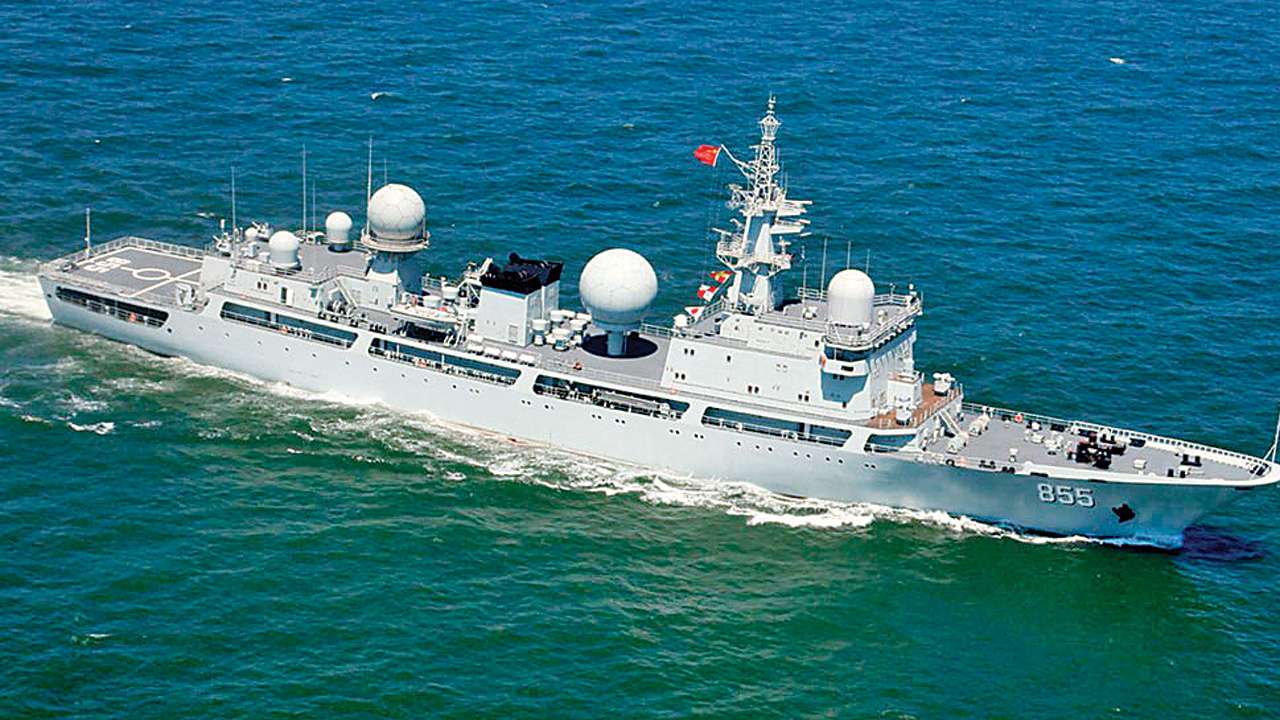
Image Source: DNA
The PLA ballistic missile, satellite tracking, and seabed mapping ship Yuan Wang 5 entered the Indian Ocean Region on December 5 and exited via Sahul Banks, northwest of Australia, on December 12, ostensibly to track Chinese space activity.
While Yuan Wang 5 is en route to Sanya Port on Hainan Island, which houses China’s ballistic missile nuclear submarine base, the PLA Navy’s frequent activity in the Sunda and Lombok Straits suggests that the PLA Navy is mapping the Sunda and Lombok Straits for future submarine operations in the Indian Ocean.
Yuan Wang 6 was surveying around the Lombok Straits last month and went down to the Indian Ocean’s 5000 km long Ninety East ridge—from the Bay of Bengal to the South East Indian Ridge—before returning to Shanghai port. In August, sister ship Yuan Wang 5 docked at China’s leased Hambantota Port in Sri Lanka, then proceeded south to prospect the same ridge before returning to its home port in Shanghai.
Although many have dismissed these Chinese activities as prospecting for heavy metals in the Indian Ocean, the true goal is to map the ocean floor for nuclear submarine operations using the Sunda, Lombok, and Ombi-Vetar straits near Australia. If Chinese submarines use the Malacca Strait, the shortest route from the South China Sea to the Bay of Bengal, they will have to surface. That is why the Yuan Wang 5 is heading to Sanya port, near the Yulin submarine base on Hainan Island.
All of the above Malacca, Sunda, Lombok and Ombi-Vetar straits are under Indonesian jurisdiction, which is why the Indonesian President was the first to meet President Xi Jinping in July 2022, following the Winter Olympics and due to the Covid pandemic in China.
Another reason for mapping the ocean floor and topography around these straits is for future anti-submarine operations, as Australia will be acquiring nuclear-powered conventional armed attack submarines built in the United States under the AUKUS pact. Furthermore, China is looking into alternative trade routes to the eastern coast of Africa and the Middle East. These routes will avoid the nine and ten-degree channels near Lakshadweep and the Andaman and Nicobar Islands, which are being monitored by India.
While the Indian military-civilian bureaucracy takes its time developing deep sea ports and jetties on India’s island territories, China is pushing ahead with its expanding naval footprint in the Indian Ocean.








